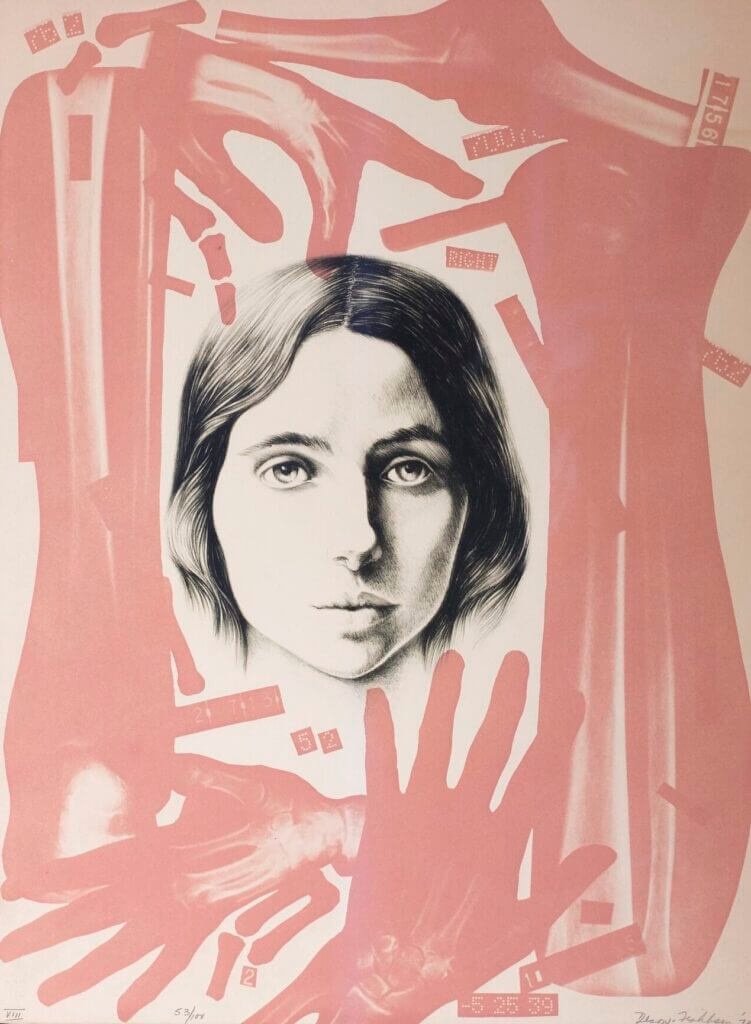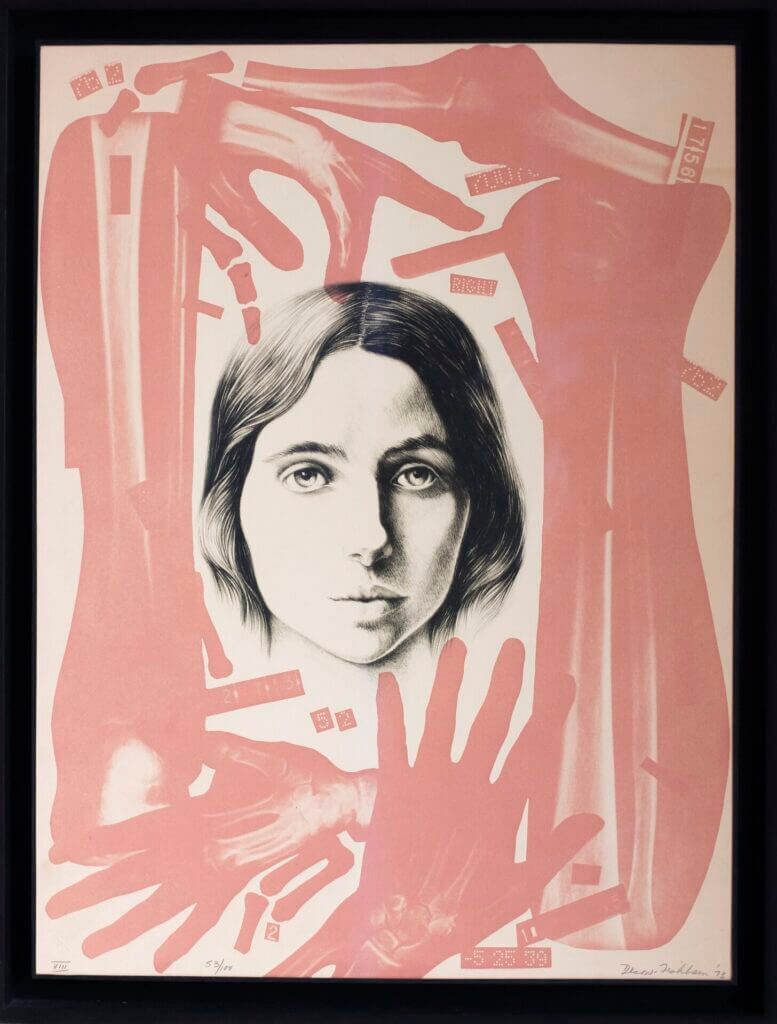Your currently viewing RAW Modern | Switch to RAW Contemporary
The New Image-VIII, 1973
“The idea for Lillian Desow-Fishbein’s portfolio of ten prints ‘The New Image’, was born from a desire to continue working with the theme of modern youth, showing the positive side of a subject so often portrayed negatively. And besides, her dealer had asked her to prepare a new exhibition. She decided to do a folio because prints permit wider distribution at lower cost to the collector and thus her message would be spread more rapidly. She discovered at the start that an artist planning such a project must either resign herself to paying the total cost (which is considerable) or find a publisher who will foot part or all of the bill. She had already decided to use Landfall Press as the printer. (Most professional printmakers work through a printshop like Landfall, since they are master printers.) Ms. Desow-Fishbein found Garlick’s Gallery in Birm-ingham, Michigan, willing to co-publish with her. They discussed various ideas for the series and finally came up with the idea they used. “The New Image”, carrying out her theme on the New Youth. She and Garlick drew up a formal agreement — she would do the art work and handle all creative aspects, including overseeing the printing and production at Landfall Press, and Garlick would do the promotion and distribution of the folio.Her first step was to research her subject even more thoroughly than before, reading,visiting campuses, and otherwise “enhancing the concept”. She then made sketches and hundreds of drawings and met with her dealer and publisher when they were completed to choose 20 or 30 preliminary ideas. After further work these drawings were eliminated down to the final ten of the folio.”Then the intricate work of preparation began,” she said. “Each final drawing had to be broken down into individual tracings for color breakdown – each color must have its own stone or plate.” Thirty stones and/or plates were used for the ten originals. There were two to four colors on each print. . .great care had to be taken for color registration. As she worked on each plate and stone, she used almost every technique available in lithography: crayon, washes, acid tint, photo transfers, x-ray transfers, straight drawing, reverse images. Then she made the final draw-ing, a guide done on mylar (acetate) for each color on each print. As she developed her concepts color by color and stone by stone, she made changes to clarify her ideas. Of course along the way there were setbacks; a cracked stone, a bad plate meant all the work to be done over again. She had to redo five of 30 stones (arduous and disciplined work, only for the very brave). After the stones and plates were ready she ran proofs, first black and white, then color only, then mixed. “I made thumbnail sketches in colored pencils of the color breakdowns and overlays as a guide to Landfall master printer Jack Lemon. We worked very closely together throughout the whole arduous process… all work being done by hand.” Finally all ten prints were perfected. It was then necessary to sign a “right to print” authorization for the master printer. After she selected the paper, the printing began.When the edition was completed it was curated by the curator at Landfall, who picked the best 100 prints. The artist was then called in to sign them. The process of numbering, titling and signing was witnessed. When this was done all plates were effaced and all stones were destroyed. “I had to sign 1000 prints,” she groaned. “It took two full days.” The final product was complete. Then the big headache of collating and packaging the folios began. Technically the dealer should make up the portfolio, colophon page and boxes, “but,” she said, “my dealer preferred that I handle the whole thing since most of the project was being processed in Chicago. So I designed the colophon page, the title page with the publisher’s statement, and selected slip sheets of parchment paper to be placed between the prints.” Finally she designed the portfolio box and the embossed signature for its cover. Then Gareliek, the pub-lisher, began the job of distribution and placement in galleries and collections all over the world. The entire project took almost two years from the inception of the idea to the initial exhibition. The portfolio has been acquired for the permanent collections of The Art Institute of Chicago; Detroit Institute of Arts; Tokyo Museum of Modern Art; and Museum of Modern Western Art, Hokkaldo, Japan. It is represented by Michael Wyman Gallery, Chicago; Garlick’s Gallery, Birmingham, Michigan; Associated American Artists, New York; and Paul Gallery, Tokyo, Japan.”
Article titled ‘The making of a folio’ by Elaine Margolis, May 1973

